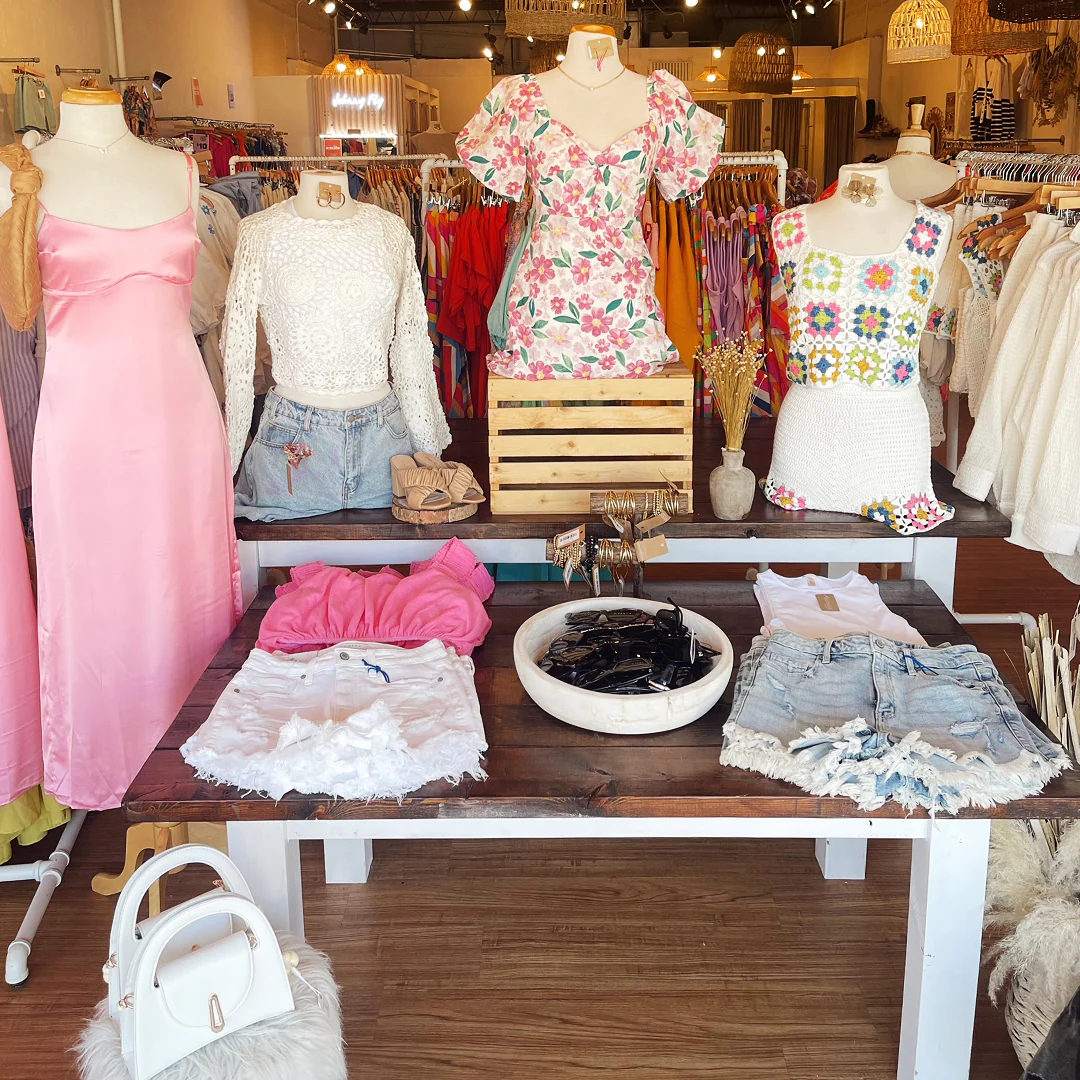Exactly how to Style Your Clothing with Boutique Fashion Discovers
Exactly how to Style Your Clothing with Boutique Fashion Discovers
Blog Article
Checking Out the Development and Impact of Garments on Modern Style Trends
The advancement of garments has substantially affected contemporary style fads, merging historic precedents with sophisticated technologies. Renowned numbers like Coco Chanel and Yves Saint Laurent reinvented the apparel industry by presenting concepts that prioritize convenience and accessibility, which remain to resonate today. Technical strides in locations such as 3D printing and wise fabrics are redefining style opportunities and consumer experiences (boutique fashion). Additionally, the expanding focus on inclusivity and sustainability is reshaping industry criteria. As we take into consideration these complex impacts, one need to question how these elements jointly redefine fashion's duty in showing and forming contemporary culture.
Historic Style Influencers
In the tapestry of style background, specific numbers have left an enduring mark, forming the fads and styles that specify whole ages. Coco Chanel, a revolutionary designer, redefined women's style by introducing comfortable, elegant garments that left from limiting bodices. Her renowned Chanel suit and little black dress have actually ended up being ageless staples in closets worldwide. Christian Dior's post-war "New Look" in 1947, with its event of feminineness with full skirts and cinched waistlines, marked a return to luxury and has continued to affect designers.
Elsa Schiaparelli is another essential figure, renowned for her progressive styles that included surrealist art, teaming up with Salvador Dalí to create wayward pieces that challenged conventional looks. Her cutting-edge usage of shade and strong patterns reverberates in modern fashion. Yves Saint Laurent, at the same time, democratized haute couture with prêt-à-porter collections, bringing path designs to the masses and establishing a precedent for contemporary ready-to-wear lines.
These visionaries, among others, not only transformed fashion in their times but also established withstanding patterns that reverberate in today's fashion business, providing a structure upon which modern-day developers continue to introduce and construct. Their traditions emphasize the significance of creative thinking and daring in fashion's ever-evolving story.
Technical Innovations in vogue
In the middle of the vibrant landscape of the apparel industry, technical advancements stand at the center of technology, improving just how developers produce and consumers involve with style. The integration of 3D printing has actually changed style procedures, allowing developers to trying out complicated frameworks and sustainable materials that were previously inconceivable. This modern technology assists in rapid prototyping, minimizing waste and speeding up manufacturing times.

Smart fabrics, embedding technology into textiles, are likewise changing the industry. Developments like self-cleaning and temperature-regulating materials supply enhanced capability and convenience. Wearable technology, including features like physical fitness monitoring and communication, includes a new measurement to style, combining looks with functionality.
Cultural Shifts and Design
As technological developments remain to improve the apparel industry, social shifts are equally influential, redefining design and consumer choices. In recent years, the rise of social media platforms has actually accelerated the circulation of worldwide fashion patterns, allowing diverse cultural impacts to merge and exist together. This electronic interconnectivity has facilitated the quick exchange of ideas, causing an extra inclusive and diverse analysis of style that reflects the multifaceted nature of modern society.
Cultural understanding and appreciation have triggered designers to draw inspiration from a broader range of ethnic and historical contexts, integrating standard motifs with contemporary appearances. This combination has actually led to fashion that reverberates with a wider audience, advertising a feeling of identification and belonging across different demographics. Additionally, the increasing need for personalization has actually driven brand names to provide customizable options, enabling consumers to reveal originality while reflecting their social heritage.
In addition, shifting social worths have impacted fashion, with inclusivity and variety becoming central themes. The industry has started to accept designs and influencers of various type of body, ethnic cultures, and gender identities, challenging conventional charm criteria. This transformation highlights the power of cultural shifts in forming the future of fashion, as design comes to be an extra genuine expression of individual and cumulative identification.
Sustainability and Modern Style
While the style market remains to progress, the necessary for sustainability has actually become progressively immediate, affecting modern-day style techniques. This change intends to attend to honest considerations and environmental concerns, bring about a reevaluation of traditional manufacturing techniques. Designers are now integrating lasting materials, such as natural cotton, recycled polyester, and naturally degradable textiles, into their collections, decreasing the eco-friendly footprint of fashion. The surge of slow fashion, which highlights top quality over quantity, urges consumers to purchase ageless items as opposed to transient patterns.
In addition, contemporary style is identified by its development in decreasing waste and advertising circularity. This approach not only minimizes environmental impact but also enhances the social obligation of fashion homes.

Future Trends in Fashion

Sustainability will certainly remain to be a driving pressure in shaping future fashion trends. The sector is significantly taking on environmentally friendly materials and honest production approaches, reacting to a growing consumer need for accountable practices. Developments such as bio-fabricated materials and closed-loop recycling systems are readied to redefine exactly how garments is generated his comment is here and taken in, reducing environmental impact while keeping style and high quality.
Social changes, including the increase of inclusivity and variety, will additionally play an essential role. As culture comes to be much more knowledgeable about social problems, style is anticipated to become a system for expression and modification. Developers will likely focus on creating collections that mirror a more comprehensive variety of identifications and experiences, championing depiction and availability.
Verdict
The development of apparel dramatically influences modern fashion trends, where historic influences merge with contemporary layouts. Key numbers like Coco Chanel and Yves Saint Laurent have redefined design, while technological advancements such as 3D printing and clever fabrics expand imaginative opportunities. Social changes towards inclusivity and sustainability urge brand names to embrace moral techniques and accept diversity. This ongoing advancement highlights fashion's duty as a mirror to societal values and technical improvement, recommending a future rich with innovation and inclusivity.
The evolution of apparel has significantly affected modern fashion fads, combining historic precedents with sophisticated technologies.Amidst the vibrant landscape of the fashion sector, technological innovations stand at the center of development, improving just how important link developers create and click here to read customers involve with style.While the fashion market proceeds to develop, the crucial for sustainability has actually become significantly urgent, influencing modern layout techniques. As sustainability comes to be ingrained in contemporary style, it leads the method for a more accountable and aware fashion sector.
The development of apparel considerably influences contemporary style patterns, where historical influences merge with contemporary designs.
Report this page